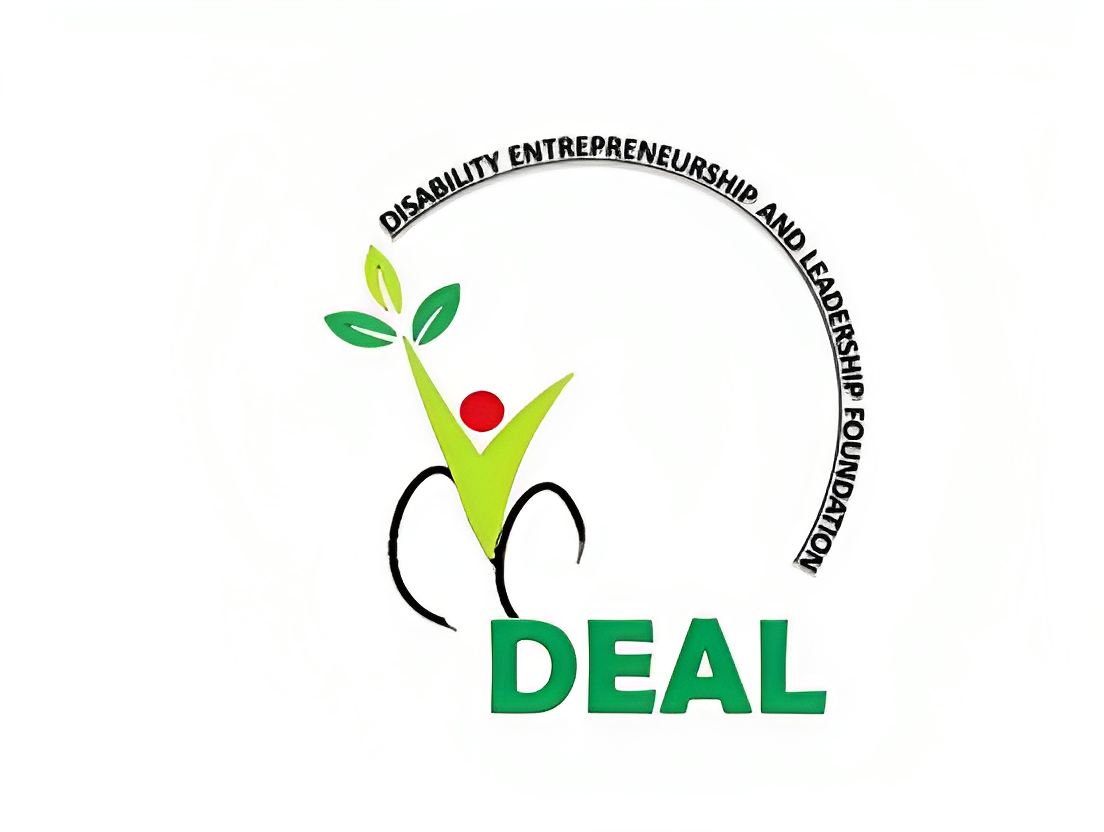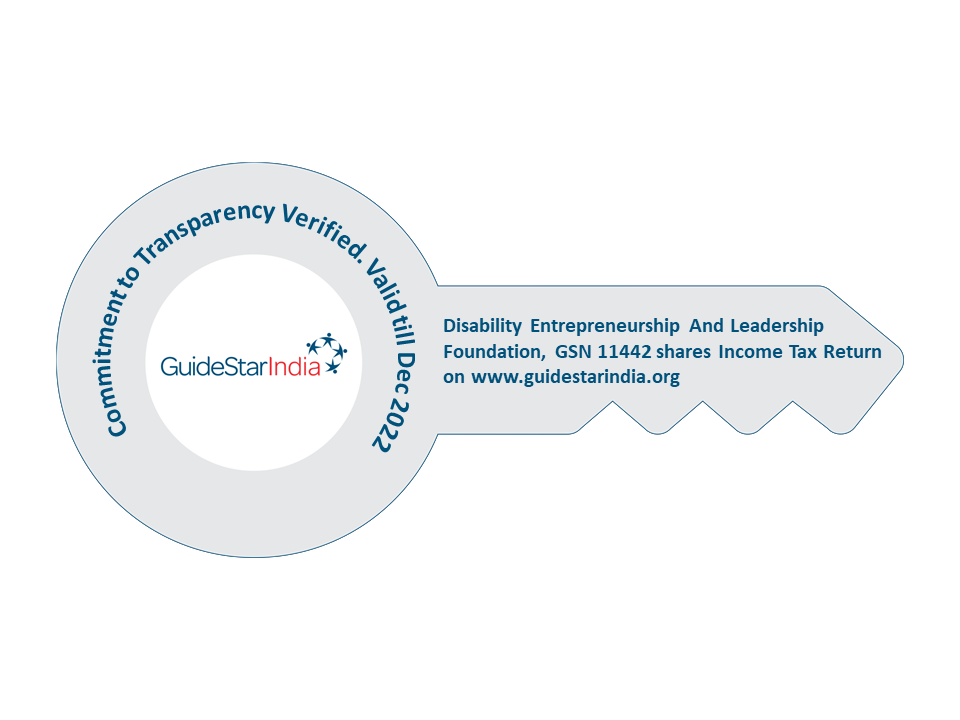Dr Desai Could you please tell us about yourself and how did you come to be associated with DEAL Foundation?
I suppose there is very little that can be said about me.
I’m a retired aeronautical engineer by profession and someone with intense curiosity deeply interested in knowing what makes life tick.
Having a questioning mind and fortunate to have had the exposure to travel widely and work in different institutional settings globally has given me the outlook that I have.
My association with Disability Entrepreneurship And Leadership (DEAL) Foundation came about as a result of a chance meeting with its Co-Founder Mr Surendra Shroff. My late brother-in-law Mr Shankar G Patil introduced me to DEAL Foundation.
Having visited the DEAL Foundation project site at Mevundi in Gadag District I’ve got increasingly involved with their work which is inspirational and one that brings hope to households of people with disabilities who have remained socially excluded and marginalised.
I see this as an excellent opportunity to make a difference to the community and the environment they live in.
What are your thoughts on Sustainability?
The dictionary meaning of ‘to sustain’ is ‘to keep (something) going over a long time or continuously’. I suppose this implies something having a sense of permanence in a assured and positive way. Ultimately the most important concern of human beings – who happen to be on top of the pyramid of life’s evolution on this beautiful, but lone planet – is to try and attempt conservation of all things which the Mother Nature has bestowed on us. Being the most intelligent – alas but also the most manipulative and capable of being most destructive – our responsibility is to live like a tenant in a rented house without causing irreversible damage to the rented property, with all the care towards maintenance of the property from time to time. It would be wonderful if we can surrender the property in a better condition when we depart from life than it was before our taking the property on rent. This would ensure that everything on this planet would remain conducive for existence in good condition for all things on Earth, both animate, which include all the living species, and inanimate, which include the whole environment at large, including natural hills, brooks, natural forests and rivers.
How do you view the relationship between the environment and human beings?
The most intelligent living entity on Earth –the human being, the Homo Sapiens – has already adequately plundered everything that came his way – almost in a way that the ‘animal became a God’ – to an extent that everyone is now doubting about the very continuation of life on Earth. Technology motivated by greed and a sense of conquering has been a tool, supported by competitive notions of the subject of economics in unleashing large scale devastation all over — not just on Earth but in recent times even in the near outer space.
It is a totally different matter that eventually in time of cosmic scale, not only the life forms on Earth but the planet itself is destined to cease to exist when our Sun would progress towards a red giant in some 450 million years. The life forms would vanish much before that.
But that gloomy too-distant possibility should not deter us from living our life gracefully and conscientiously. That brings in many concerns related to sustainability of our very living which depends intricately on the wellbeing of plants, animals and the entire environment that is basic to every living form.
The most essential element for sustainability is sustainable agriculture which is basic to our nourishment and good health. Agricultural practices can vary considerably and have an impact on other elements including, water, air and the environment.
Agriculture I believe is the Backbone of Life.
For good sustained human health, quality food is essential, though it is true that water and air are equally important and essential. In the modern life style of buzz and anxiety of survival activities we have managed to learn to survive somehow as if the quality of air, water and food are secondary. This is a blunder. If the quality of these three essential elements is compromised the whole purpose of life can be questioned. Why do we live: live to eat or eat to live? The response should be we eat to live.
It is an essential fact of life that our quality of life and its aims and desired goals depend on human mental health which is very closely linked to the quality of food that we eat. The enzyme serotonin that is essential for balanced brain activity is produced in the digestive system and it gets a boost with quality food that is balanced in the elements such as proteins, carbohydrates, fats, fibre, and other biotic elements like enzymes and hormones.
Freshness of food – cooked or uncooked – is important as stale food and vegetables get depleted in nourishing elements and may also be contaminated with micro-organisms harmful to human and animal health. Stored food and preserved food articles, including fruits and vegetables, are not to be preferred. This brings in the question of food production and storage.
The Question of Distance between Food and Fork:
It is to be appreciated that the ‘distance’ between food and fork, figuratively speaking, should be as small as possible. Food articles produced on sites far off from consumer sites require intricate methods of transportation needing considerable time and human handling. Transportation over long distances would require months of processes involving transportation over sea and land. Highly perishable food articles, as they are, require some kind of preservation that has chemical component that involves external coating and also sometimes internal injective treatment. The cold storage system that is very essential also can result in degradation. Compare the taste of a freshly plucked apple to that of a colourful-looking apple from New Zealand or Tasmania and you will realize what we are eating in South India is a insipid core with a leathery skin. It is a matter of small satisfaction that we at least get to taste something of an apple, but not the apple that ‘keeps the doctors away’. Well, as an aside, these days of abundantly seen super-speciality hospitals and junk-food culture and profit-backed economic considerations you cannot keep the doctors away no matter what you do, for air, water and food have lost their purity considerably.
To avoid the problem of deteriorated food it would be essential to try and adapt food that is by and large local, seasonal and grown with consideration of human welfare. This brings us to the questions of scales and modes of agricultural production, its preservation without chemicals and its homely handling and distribution, not to forget its sustainability.
What are your thoughts on scale of Production in Agriculture? Mass Production vs. Production by Masses:
As Gandhiji said, vociferously, he preferred production by masses of his India rather than mass production. How significant this has been in our present situation in our country which distinguishes itself with relatively young population compared to advanced countries which invariably have ended up with relatively large advanced age population incapable of harsh physical labour characteristic of agricultural operations; only way for these countries is to use massive agricultural implements on large land holdings and to try and attempt mass production at each agricultural holding. Apart from this, organisational skills to engage in massive technological undertaking with widespread quality consciousness and their lead in established technologies in the West have given the West an edge in gaining a foothold on exports of high-end technological products. So long as the advanced West continues its superiority in technology, food security is not an issue on the strength of export revenues that can be bartered for quality food and agricultural products. India, in my view, has yet to establish a certain state of maturity in the export of high-end technological goods. Food security in the absence of handsome exports of high-end technological commodities can become a significant issue. We therefore need to continue to strengthen our agricultural backbone.
And if we can do this in a sustainable and inclusive way we will be better-off as a society.
Mass production can only benefit the few whereas production by masses holds the promise of a better future for all.
Of course I’m mindful that we have entered the era of machine learning and robotics as such will have more leisure time at our disposal.
How do you see the situation in India developing?
India has largely fragmented land holdings. Typically no sooner a young person in a family gets married than the family lands get partitioned as a matter of right, status or family feud.
One can see stretches of uncultivated lands everywhere in recent times.
Because of acute fragmentation of agricultural lands — typically four to five acres in extent– use of massive agricultural equipment is impractical. Tractors have become a symbol of status and simultaneously farmers are switching over to commercial crop that have little or no fodder content. For a land holding of a mere hectare, agricultural operations with oxen is the best way out. Tractors consume valuable non-renewable fossil fuels, create pollution and, what is not accepted widely is the fact that, tractors with mass of more than a ton can harden the subsoil to a hard pan over which only a foot of top soil appears to be loosened. I recollect my grandfather not allowing us, aged mere 5 or 6 years, to randomly walk about over moisture laden soil lest the soil be compacted! The bullocks on the other hand eat residues of agricultural produce and give valuable dung for making productive compost with good humous content. Further, in a country like ours where we have hardly paid any attention hitherto for conservation of underground water and have actually drawn out valuable ground water without rhyme or rhythm, use of heavy agricultural machinery is to be avoided. The hard pan created under the top soil would encourage lateral seepage of precipitation rather than push into the underground, drop by drop. It is also significant to note that that hard pan of subsoil apart from inhibiting seepage of rain water into the underground also cuts off drastically the capillary action through which the molecules of deep ground water can reach the root zone of plants.
What can be done to address the situation we find ourselves in?
Seen in a different perception, numerous small land holdings are not a disadvantage in a country like ours. On such small holdings if we can cultivate diverse crops in lieu of mono-crop over a large area, to a great extent epidemic pest attack can be avoided. I have been a witness to many valuable crops like ground nut and chilly disappear from certain regions in North Karnataka because crop-specific viruses and pathogens had wide availability of food at any given time to proliferate and to leave adequate residue in the soil for attacking the next crop of similar nature.
Fragmented land holdings can reduce greatly unemployment and redeem the agriculture sector of problems due to presently unwilling, scanty and expensive agricultural labour.
We need to inculcate leadership qualities in our youth and inspire a sense of pride in self-employment and enterprise development.
This is where I think initiatives like DEAL Foundation can help to add and create value.
I also think the mass exodus of migrant labour from urban areas to the rural hinterland over the current crisis caused by the Covid19 Pandemic, provides an excellent opportunity to reconnect communities and their relationship with land and living of it.


 Awarded by Guidestar India
Awarded by Guidestar India